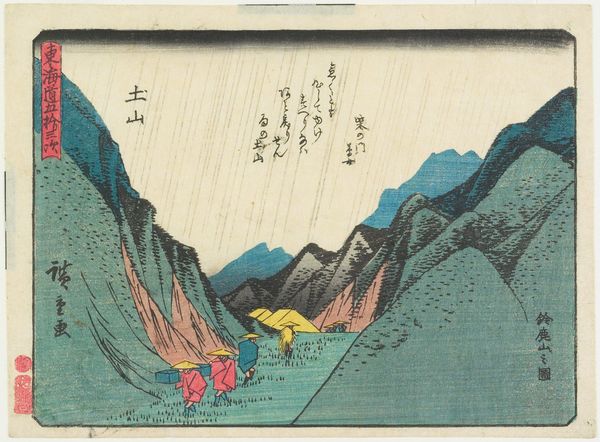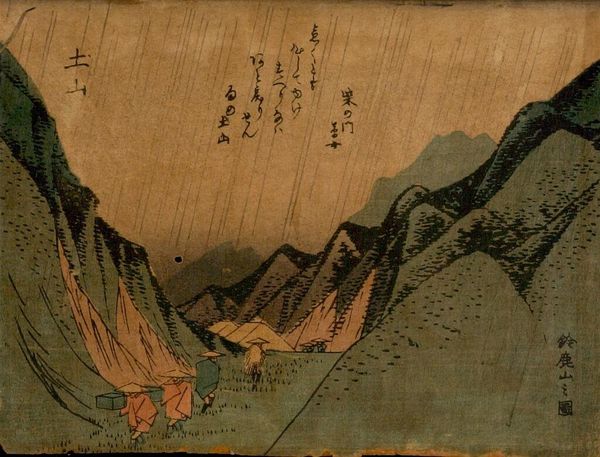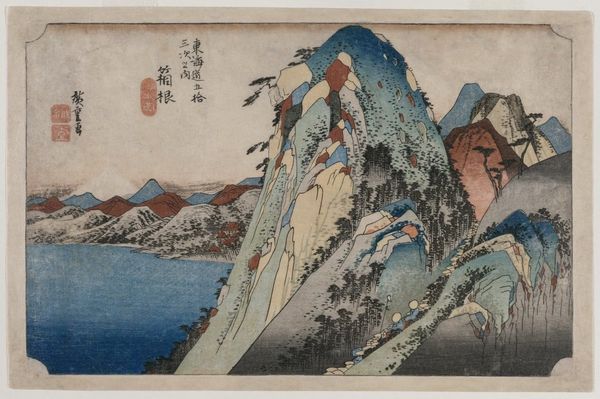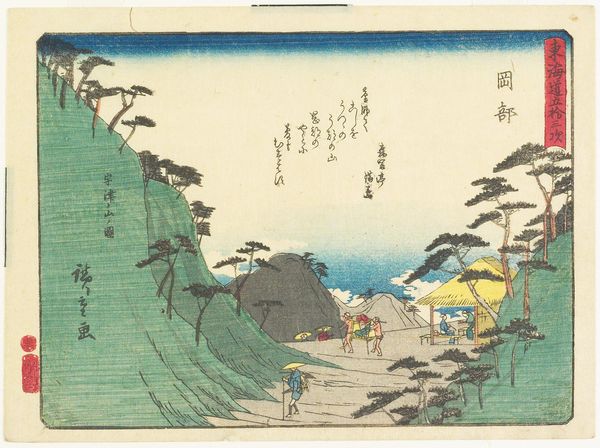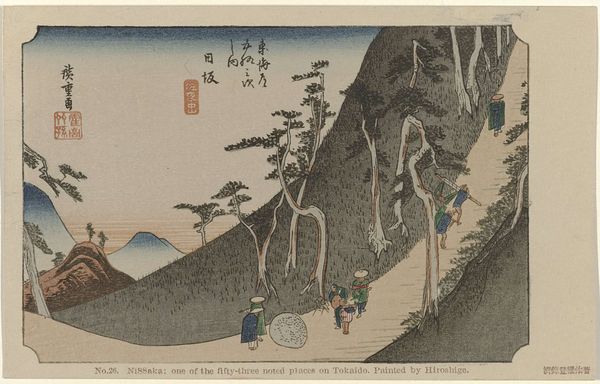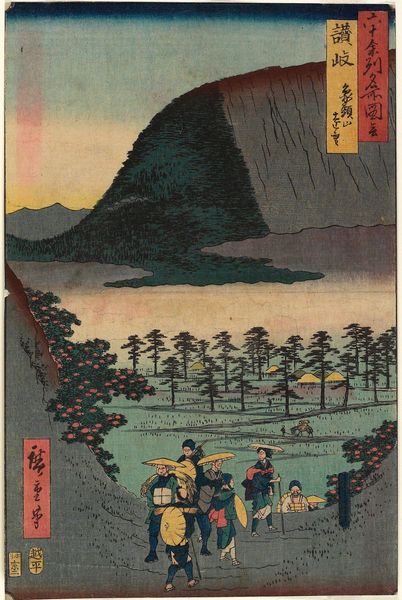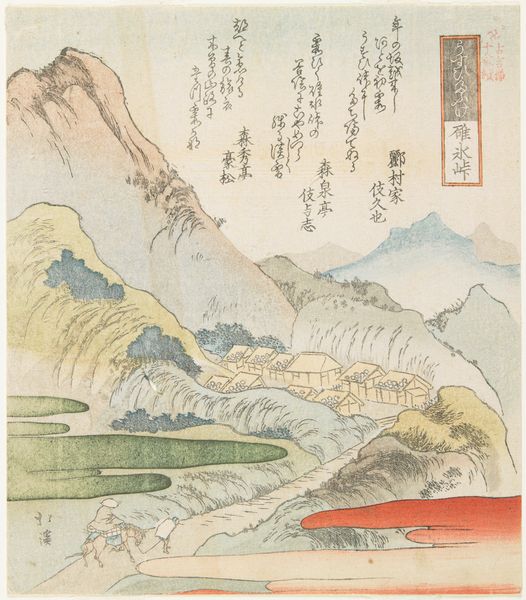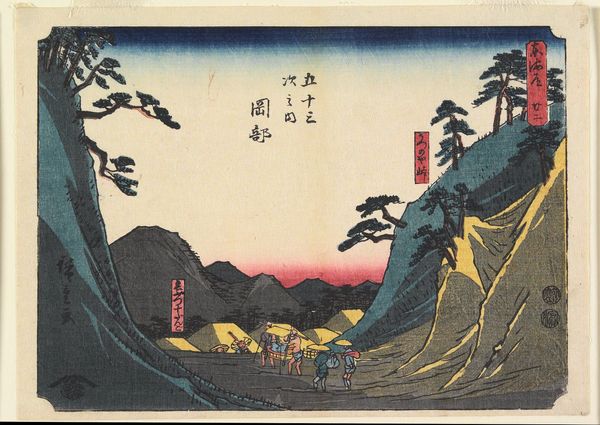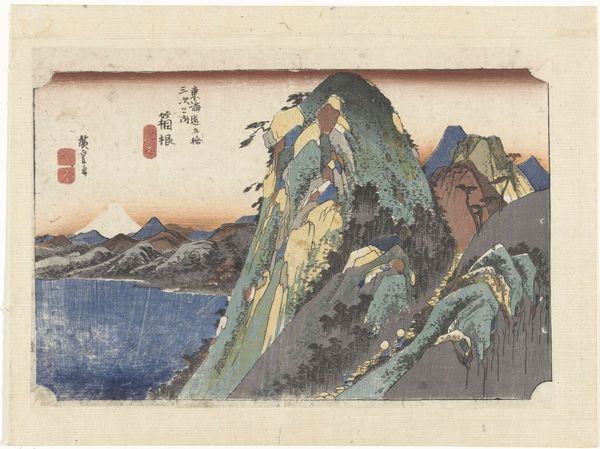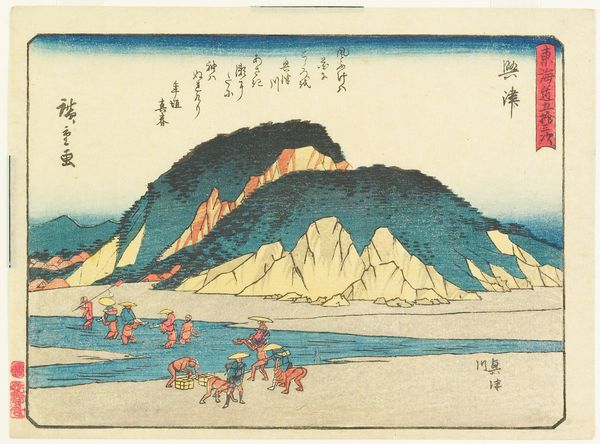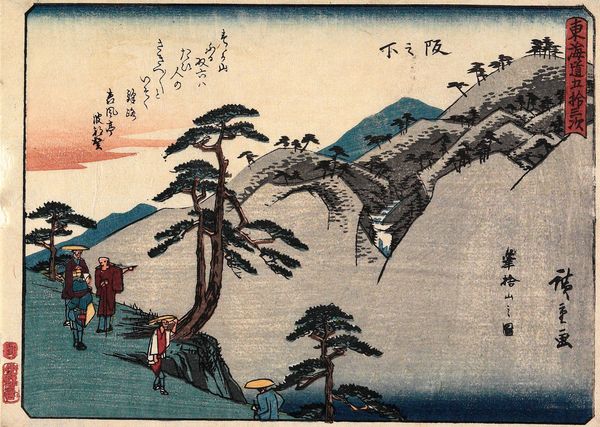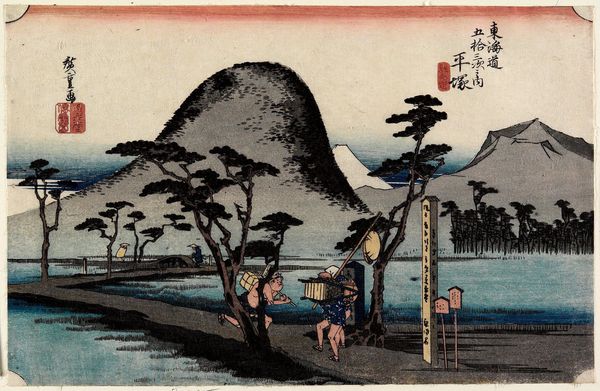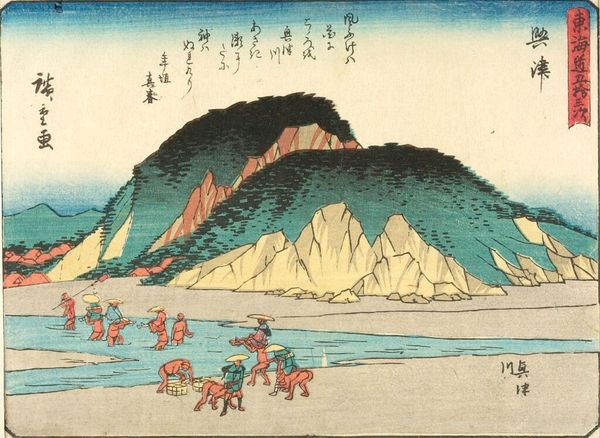
print, ink, woodblock-print, wood
#
narrative-art
# print
#
asian-art
#
landscape
#
ukiyo-e
#
ink
#
woodblock-print
#
line
#
wood
Dimensions: 6 x 8 1/4 in. (15.3 x 20.9 cm) (image)6 1/4 x 8 3/4 in. (15.8 x 22.2 cm) (sheet)
Copyright: Public Domain
Curator: Hiroshige's woodblock print, "View of Mount Suzuka in Tsuchiyama," created around 1840-1842, is an evocative piece. It's currently held at the Minneapolis Institute of Art. Editor: It's arresting. The deluge feels so immediate, those streaks of rain really dominate the composition, don't they? Almost overwhelming. Curator: That's characteristic of Hiroshige’s talent. He had a knack for capturing the atmosphere of a specific locale. These landscapes from the Tokaido series played a crucial role in shaping how Japan presented itself visually during the 19th century, especially as trade increased. Editor: It really highlights the vulnerability of those travelers on the road. They're almost being swallowed by the landscape. Is there something to be said about class dynamics, and who would have the option not to travel through such harsh weather? Curator: Absolutely, and Hiroshige was acutely aware of the societal hierarchies inherent in travel at that time. The Tokaido Road was a vital artery, but it wasn't equally accessible to everyone. There were certainly imperial edicts and cultural norms which affected travel and shaped these images. Editor: I appreciate how the colors enhance the drama; the greys of the downpour against the small pops of red worn by the travelers. It’s a very compelling contrast and almost enhances that feeling of resilience against adversity. What do you think a contemporary audience should take away from a piece like this? Curator: The enduring resonance of the everyday and a poignant look at weather. Hiroshige's brilliance lies in transforming the ordinary into something profound and the fact that his images, almost two centuries later, continue to move us, is testament to his vision. Editor: Well said. It’s that enduring reminder of our shared, yet deeply individual, human experience that makes pieces like this truly powerful. The relationship of ourselves and the elements will never be antiquated.
Comments
No comments
Be the first to comment and join the conversation on the ultimate creative platform.
